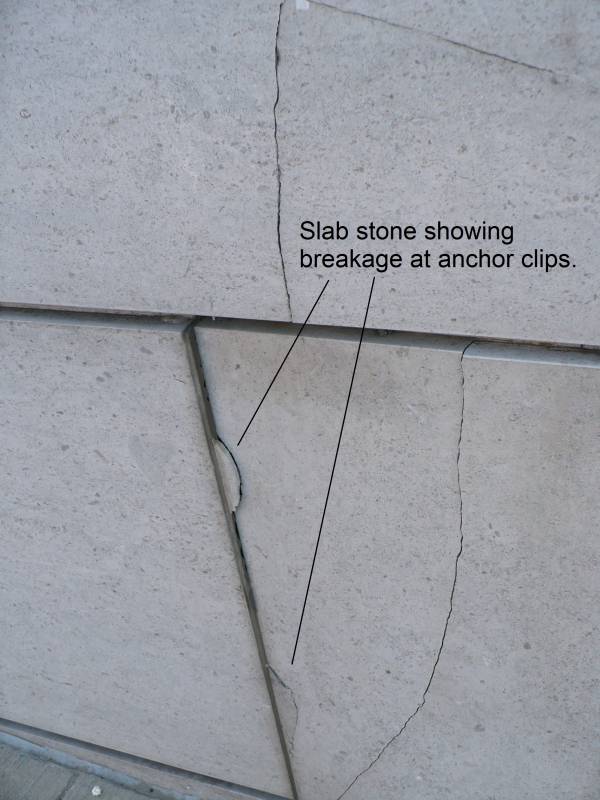Red Sandstone Exterior Cladding NASA Johnson Space Center Building 21, Houston, TX Reminiscent of an Southwestern Desert skyline, Red Sandstone can be found all over the world in desert and dry areas. Colored by Iron oxide, Red Sandstone has a neutral warm red color. Red sandstone makes for great exterior cladding due to […]
Stone Failure With Clips and Dowels: Why StonePly is a Better Solution
Stone failure can quickly transform gorgeous granite or limestone cladding into an eyesore. Breakage, fractures, and cracks can often be attributed to installation methods that place excessive stress on certain sections of the cladding system rather than to poor quality or inherently weak stone. With the right installation methods, the risk of stone failure can be minimized to ensure cladding systems remain in good condition.
Natural Stone Installation With Clips and Dowels
Clips and dowels are common tools for installing natural stone cladding panels. In this method, holes are drilled into the edges of natural stone panels that will be adjacent to each other. A dowel is inserted through an anchor clip and used to adjoin the two stone pieces. The end result is that a very small portion of the stone must bear the brunt of the stress due to wind loads, impacts, and bending, which can lead to failure in the form of cracks or even shattering.
Errors and miscalculations during installation-such as failing to leave adequate space to allow for the contraction and expansion that occur in all stone-can also lead to fractures. Overall, the failure rate for this type of attachment system is quite high.
Installation Methods for StonePly Panels
StonePly panels are usually installed using one of three methods. In the Z-clip system, panels with Z clips on the back are slid into a Z molding that is mechanically attached to the substrate. In the concealed screw system, the back of the natural stone panel contains numerous plates that extend into the joints. These plates are then secured to the substrate with screws, which are completely hidden in the finished product. In some instances, the panels are affixed directly to the substrate with structural silicone.
In every case, unlike with clips and dowels, loads are spread out over the entire panel so no single section is subjected to undue stress.
Testing Results Confirm That StonePly Panels Hold Up Over The Long-Term
Studies performed in independent national testing laboratories and StonePly’s research facilities show that our cladding systems have numerous properties that make them highly unlikely to fail, even in harsh environments. Consider the following:
- In a freeze/thaw test, StonePly panels showed no cracking or splitting after 100 cycles
- In a hard body impact test, StonePly panels exhibited no damage
- In a temperature cycling test, StonePly panels did not exhibit any signs of failure or bowing
- Results of a uniform static deflection test revealed no attachment or panel failure
For More StonePly Information
The installation methods for and properties of StonePly panels can reduce the risk of stone failure associated with systems that use clips and dowels. This is just one advantage that makes our lightweight natural stone panels preferable to slab stone. For more information about applications and benefits, visit the StonePly website. We are always available to answer questions and provide free initial consultations and estimates. You can get in touch with us by filling out the form on our contact page or by calling 903-454-4630.

No comments yet.